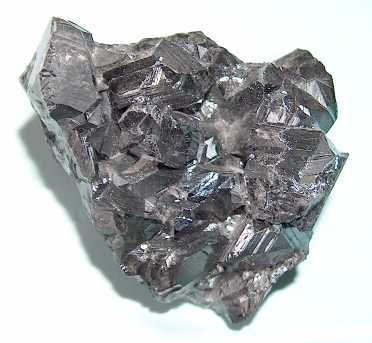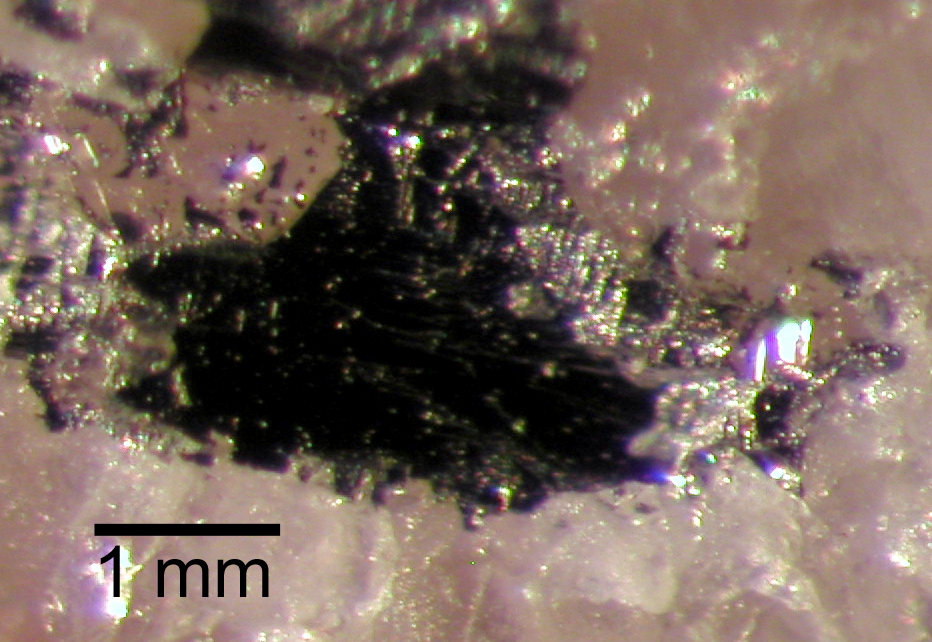|
Tlalocite
Tlalocite is a rare and complex tellurate mineral with the formula Cu10 Zn6( Te O4)2( Te O3)( O H)25 Cl · 27 H2O. It has a Mohs hardness of 1, and a cyan color. It was named after Tlaloc, the Aztec god of rain, in allusion to the high amount of water contained within the crystal structure. It is not to be confused with quetzalcoatlite, which often looks similar in color and habit. Occurrence Tlalocite was first identified in the Bambollite mine (La Oriental), Moctezuma, Municipio de Moctezuma, Sonora, Mexico and it was approved by the IMA in 1974. It often occurs together with tenorite, azurite, malachite and tlapallite. It is found in partially oxidized portions of tellurium Tellurium is a chemical element with the symbol Te and atomic number 52. It is a brittle, mildly toxic, rare, silver-white metalloid. Tellurium is chemically related to selenium and sulfur, all three of which are chalcogens. It is occasionally fo ...-bearing hydrothermal veins. References Cop ... [...More Info...] [...Related Items...] OR: [Wikipedia] [Google] [Baidu] |
Quetzalcoatlite
Quetzalcoatlite is a rare tellurium oxysalt mineral with the formula Zn6Cu3(TeO6)2(OH)6 · AgxPbyClx+2y. It also contains large amounts of silver- and lead(II)chloride with the formula Agx Pby Clx+2y (x+y≤2). It has a Mohs hardness of 3 and it crystallizes in the trigonal system. It has a deep blue color. It was named after Quetzalcoatl, the Aztec and Toltec god of the sea, alluding to its color. It is not to be confused with tlalocite, which has a similar color and habit. Occurrence Quetzalcoatlite was first identified in the Bambollita mine (La Oriental), Moctezuma, Municipio de Moctezuma, Sonora, Mexico. It was later also found in another nearby mine, the Moctezuma mine, and it has also been found in mines in Arizona, Utah and California. It occurs as a rare mineral in the oxidized zone of tellurium-bearing hydrothermal deposits and it is often associated with hessite, galena, bornite, cerussite, azurite, chlorargyrite, teineite, quartz, baryte, khinite, dugganite, ... [...More Info...] [...Related Items...] OR: [Wikipedia] [Google] [Baidu] |
Tlapallite
Tlapallite is a rare and complex tellurate mineral with the chemical formula . It has a Moh's hardness of 3 and it is green in colour. It was named after the Nahua word "Tlalpalli", which translates to paint, referring to the paint-like habit of the mineral. Its formula and crystal structure were redefined in 2019, showing it contained a mixed-valence phyllotellurate layer . Occurrence It was discovered in 1972 the Bambollita mine (La Oriental), Moctezuma, Municipio de Moctezuma, Sonora, Mexico, a mine known for its tellurium deposits, and it was approved by the IMA in 1977. Here, it is found as thin paint-like crusts on rock fractures and next to thin veins running through rhyolite. It is often found as a thin film on quartz, sericite, calcite or baryte, but it also forms botryoidal aggregates. It is often found alone, but may be associated with other minerals, especially carlfriesite. It has also been found in the emerald mine in Tombstone District, Cochise County, Ari ... [...More Info...] [...Related Items...] OR: [Wikipedia] [Google] [Baidu] |
Orthorhombic
In crystallography, the orthorhombic crystal system is one of the 7 crystal systems. Orthorhombic lattices result from stretching a cubic lattice along two of its orthogonal pairs by two different factors, resulting in a rectangular prism with a rectangular base (''a'' by ''b'') and height (''c''), such that ''a'', ''b'', and ''c'' are distinct. All three bases intersect at 90° angles, so the three lattice vectors remain mutually orthogonal. Bravais lattices There are four orthorhombic Bravais lattices: primitive orthorhombic, base-centered orthorhombic, body-centered orthorhombic, and face-centered orthorhombic. For the base-centered orthorhombic lattice, the primitive cell has the shape of a right rhombic prism;See , row oC, column Primitive, where the cell parameters are given as a1 = a2, α = β = 90° it can be constructed because the two-dimensional centered rectangular base layer can also be described with primitive rhombic axes. Note that the length a of the primi ... [...More Info...] [...Related Items...] OR: [Wikipedia] [Google] [Baidu] |
Mexico
Mexico ( Spanish: México), officially the United Mexican States, is a country in the southern portion of North America. It is bordered to the north by the United States; to the south and west by the Pacific Ocean; to the southeast by Guatemala, Belize, and the Caribbean Sea; and to the east by the Gulf of Mexico. Mexico covers ,Mexico '' The World Factbook''. . making it the world's 13th-largest country by area; with approximately 12 ... [...More Info...] [...Related Items...] OR: [Wikipedia] [Google] [Baidu] |
Hydroxide Minerals
The oxide mineral class includes those minerals in which the oxide anion (O2−) is bonded to one or more metal alloys. The hydroxide-bearing minerals are typically included in the oxide class. The minerals with complex anion groups such as the silicates, sulfates, carbonates and phosphates are classed separately. Simple oxides: *XO **Periclase group ***Periclase *** Manganosite **Zincite group *** Zincite *** Bromellite ***Tenorite ***Litharge * **Cuprite **Ice * **Hematite group ***Corundum ***Hematite ***Ilmenite * **Rutile group ***Rutile ***Pyrolusite *** Cassiterite **Baddeleyite **Uraninite **Thorianite * **Spinel group ***Spinel ***Gahnite ***Magnetite ***Franklinite *** Chromite ** Chrysoberyl **Columbite *Hydroxide subgroup: ** Brucite ** Manganite **Romanèchite **Goethite group: *** Diaspore ***Goethite Nickel–Strunz Classification -04- Oxides IMA-CNMNC proposes a new hierarchical scheme (Mills et al., 2009). This list uses it t ... [...More Info...] [...Related Items...] OR: [Wikipedia] [Google] [Baidu] |
Tellurate And Selenate Minerals
In chemistry tellurate is a compound containing an oxyanion of tellurium where tellurium has an oxidation number of +6. In the naming of inorganic compounds it is a suffix that indicates a polyatomic anion with a central tellurium atom.Nomenclature of Inorganic Chemistry IUPAC Recommendations 2005 – Full text (PDF) Tellurium oxyanions Historically the name tellurate was only applied to oxyanions of tellurium with +6, formally derived from , and the name |
Tellurite And Selenite Minerals
The tellurite ion is . A tellurite (compound), for example sodium tellurite, is a compound that contains this ion. They are typically colorless or white salts, which in some ways are comparable to sulfite. A mineral with the formula TeO2 is called tellurite. Structure and reactions Tellurite dianion is pyramidal, like selenite and sulfite. The anion has C3v symmetry. Tellurites can be reduced to elemental tellurium by electrolysis or a strong reducing agent. When fused with nitrate salts, tellurite salts oxidize to tellurates (). Upon acidification of aqueous solutions of tellurite salts, solid hydrated tellurium dioxide (TeO2) precipitates. This reaction allows the separation of tellurium from selenium since selenous acid remains soluble at low pH. The intermediate in the protonation occurs at oxygen to give eO2(OH)sup>−. Uses Potassium tellurite (K2TeO3) is used together with agar as part of a selective medium for growth of some bacteria (Clauberg medium). Coryne ... [...More Info...] [...Related Items...] OR: [Wikipedia] [Google] [Baidu] |
Zinc Minerals
Zinc is a chemical element with the Symbol (chemistry), symbol Zn and atomic number 30. Zinc is a slightly brittle metal at room temperature and has a shiny-greyish appearance when oxidation is removed. It is the first element in group 12 element, group 12 (IIB) of the periodic table. In some respects, zinc is chemically similar to magnesium: both elements exhibit only one normal oxidation state (+2), and the Zn2+ and Mg2+ ions are of similar size.The elements are from different metal groups. See periodic table. Zinc is the 24th most abundant Abundance of elements in Earth's crust, element in Earth's crust and has five stable isotopes. The most common zinc ore is sphalerite (zinc blende), a zinc sulfide mineral. The largest workable lodes are in Australia, Asia, and the United States. Zinc is refined by froth flotation of the ore, Roasting (metallurgy), roasting, and final extractive metallurgy, extraction using electricity (electrowinning). Zinc is an essential trace element fo ... [...More Info...] [...Related Items...] OR: [Wikipedia] [Google] [Baidu] |
Copper(II) Minerals
Copper is a chemical element with the symbol Cu (from la, cuprum) and atomic number 29. It is a soft, malleable, and ductile metal with very high thermal and electrical conductivity. A freshly exposed surface of pure copper has a pinkish-orange color. Copper is used as a conductor of heat and electricity, as a building material, and as a constituent of various metal alloys, such as sterling silver used in jewelry, cupronickel used to make marine hardware and coins, and constantan used in strain gauges and thermocouples for temperature measurement. Copper is one of the few metals that can occur in nature in a directly usable metallic form (native metals). This led to very early human use in several regions, from circa 8000 BC. Thousands of years later, it was the first metal to be smelted from sulfide ores, circa 5000 BC; the first metal to be cast into a shape in a mold, c. 4000 BC; and the first metal to be purposely alloyed with another metal, tin, to create bronze, c. ... [...More Info...] [...Related Items...] OR: [Wikipedia] [Google] [Baidu] |
Tellurium
Tellurium is a chemical element with the symbol Te and atomic number 52. It is a brittle, mildly toxic, rare, silver-white metalloid. Tellurium is chemically related to selenium and sulfur, all three of which are chalcogens. It is occasionally found in native form as elemental crystals. Tellurium is far more common in the Universe as a whole than on Earth. Its extreme rarity in the Earth's crust, comparable to that of platinum, is due partly to its formation of a volatile hydride that caused tellurium to be lost to space as a gas during the hot nebular formation of Earth.Anderson, Don L.; "Chemical Composition of the Mantle" in ''Theory of the Earth'', pp. 147-175 Tellurium-bearing compounds were first discovered in 1782 in a gold mine in Kleinschlatten, Transylvania (now Zlatna, Romania) by Austrian mineralogist Franz-Joseph Müller von Reichenstein, although it was Martin Heinrich Klaproth who named the new element in 1798 after the Latin 'earth'. Gold telluride minera ... [...More Info...] [...Related Items...] OR: [Wikipedia] [Google] [Baidu] |
Malachite
Malachite is a copper carbonate hydroxide mineral, with the formula Cu2CO3(OH)2. This opaque, green-banded mineral crystallizes in the monoclinic crystal system, and most often forms botryoidal, fibrous, or stalagmitic masses, in fractures and deep, underground spaces, where the water table and hydrothermal fluids provide the means for chemical precipitation. Individual crystals are rare, but occur as slender to acicular prisms. Pseudomorphs after more tabular or blocky azurite crystals also occur. Etymology and history The stone's name derives (via la, molochītis, frm, melochite, and Middle English ''melochites'') from Greek Μολοχίτης λίθος ''molochites lithos'', "mallow-green stone", from μολόχη ''molochē'', variant of μαλάχη ''malāchē'', "mallow". The mineral was given this name due to its resemblance to the leaves of the mallow plant. Malachite was mined from deposits near the Isthmus of Suez and the Sinai as early as 4000 BCE. ... [...More Info...] [...Related Items...] OR: [Wikipedia] [Google] [Baidu] |
Azurite
Azurite is a soft, deep-blue copper mineral produced by weathering of copper ore deposits. During the early 19th century, it was also known as chessylite, after the type locality at Chessy-les-Mines near Lyon, France. The mineral, a basic carbonate with the chemical formula Cu3(CO3)2(OH)2, has been known since ancient times, and was mentioned in Pliny the Elder's '' Natural History'' under the Greek name (κυανός: "deep blue," root of English ''cyan'') and the Latin name ''caeruleum''. Since antiquity, azurite's exceptionally deep and clear blue has been associated with low-humidity desert and winter skies. The modern English name of the mineral reflects this association, since both ''azurite'' and ''azure'' are derived via Arabic from the Persian (لاژورد), an area known for its deposits of another deep-blue stone, lapis lazuli ("stone of azure"). Mineralogy Azurite has the formula Cu3(CO3)2(OH)2, with the copper(II) cations linked to two different anions, ca ... [...More Info...] [...Related Items...] OR: [Wikipedia] [Google] [Baidu] |





